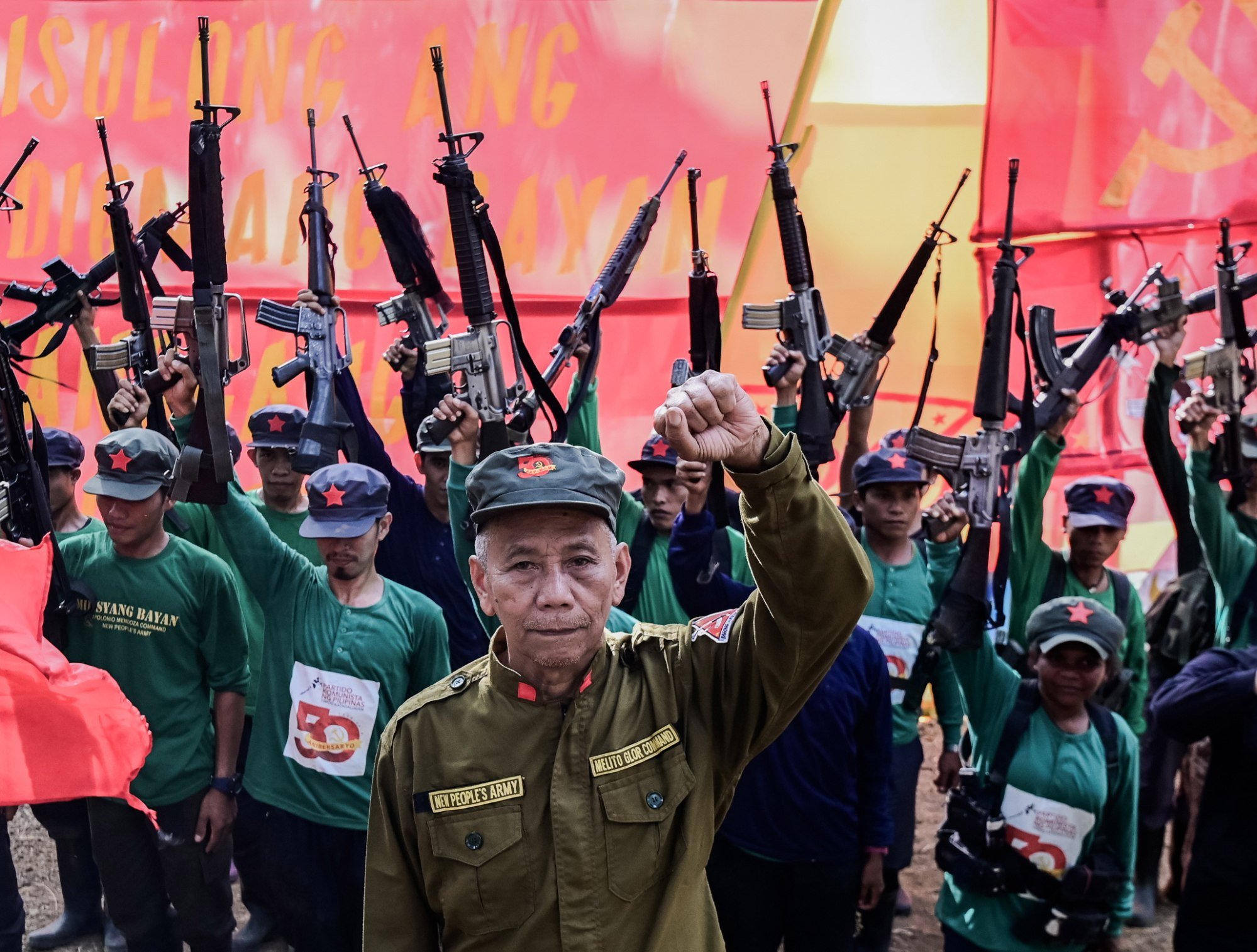
Philippine Maoist rebels dismiss Manila’s goal of ending insurgency by 2025, say they are ready to keep fighting
- Since the start of the year, the New People’s Army has clashed with government forces at least 10 times in Rizal, Batangas and Iloilo
- President Ferdinand Marcos Jnr declared in December there were ‘no more active’ NPA bases in the country
Rebel leaders say the insurgency is growing stronger, contrary to the government’s claims.
The long-running conflict has claimed more than 60,000 lives on both sides since the start of the insurgency in 1969, according to the Philippine Army.
While the military believes the Marxist-Leninist-Maoist NPA peaked during the 1980s, the rebels claim they expanded their fighting capacity in the following years, carrying out offensives throughout the country’s major island groups.
Marcos Jnr reported that the Armed Forces of the Philippines (AFP) had neutralised 1,399 targets, eliminating all NPA strongholds. In January, however, AFP Chief Romeo Brawner said 11 supposedly “weakened” insurgent bases were still active.
Despite failing to crush the insurgents multiple times, the government says it remains optimistic it can finally wipe out NPA by the end of 2024.
NPA serves as the armed wing of the Communist Party of the Philippines (CPP). Alongside the National Democratic Front of the Philippines (NDFP), a CPP-led coalition, NPA has been waging an insurgency to demand land reform and poverty eradication.
Insurgents were still active in 14 out of 17 regions in the country, according to the CPP’s estimates in December 2023, fending off nearly 150 battalions of soldiers, police and paramilitary.
Marco Valbuena, CPP Information Officer, scoffed at Manila’s claims, saying most NPA units have expanded their areas of control and “adjusted to the AFP’s tactics of large military mobilisation”.
The CPP, however, acknowledged it had encountered significant setbacks in recent years and called for renewed efforts from its forces to “recover from losses and rebuild”.
NDFP chairwoman Julie de Lima said that the successful encounters since January were not necessarily a response to Marcos Jnr’s claims but a result of the movement gaining ground.
“Even at this early stage, we can already see that they [NPA units] are being strengthened. Year after year and regime after regime, the AFP has set the target of ending the revolutionary armed struggle but it has never succeeded. There are no indications that it would succeed by 2025,” she told This Week in Asia.

Georgij Engelbrecht, a senior analyst of the International Crisis Group, an NGO working to resolve armed conflicts, said the political nature of the insurgency will not be easy to address despite NPA’s recent setbacks.
“It is possible we see an even more active government and more fronts dismantled, then remnants will remain and maybe in some areas, they may even grow stronger,” Engelbrecht, who is based in the Philippines, told This Week in Asia.
Four AFP soldiers were killed in the recent encounters with three in Rizal and one in Iloilo, according to NPA. AFP has yet to respond to NPA’s claim but said the rebels had suffered 21 casualties since January.
NPA-Rizal spokesman Macario Liwanang said the military’s 80th Infantry Battalion (80IB) stationed in the province “had no respect for the fallen and their families that they do not even reveal the names of the casualties. They should rather try to cleanse an already rotten reputation”.
Liwanag said the recent ambushes were aimed at punishing the army for trying to force out indigenous communities from their lands to make way for the Wawa-Taybasan Dam Project.
According to the 80IB, its presence in Rizal was to engage the communities there to help them with their grievances. “Another objective here is to set up checkpoints in different areas in Rizal to ensure safety against potential terrorist threats,” it said.
The 80IB claims the insurgents are on the run and losing the support of communities, with more residents volunteering to act as informants for the military.
Meanwhile, AFP has denied accusations by NPA that it abducted and beat a civilian earlier this month to press him for information amid the fighting.
Engelbrecht lamented about the dearth of impartial observers to investigate the number of casualties on the ground. With AFP and NPA giving divergent accounts, it is hard to establish the scale of the damage from the fighting, he added.
While the people who are caught in the conflict have been advised to file complaints by the military for any serious incidents, they are afraid of coming forward and speaking on record.
“Right now, we can only approximate the truth,” Engelbrecht said.
There is a need for the presence of independent civil society groups or an international observer mission in the conflict zones to ensure both sides are held to account on global humanitarian standards, he added.
The recent skirmishes threaten to derail any chances of peace negotiations between the government and the insurgents.
Last November, NDFP and Manila signed a joint communique in Oslo, Norway, to signal their commitment towards a “peaceful resolution of the armed conflict”.
Stop-start peace negotiations between the two sides that began in the late 80s were ended by President Rodrigo Duterte after a clash in November 2017 in Bukidnon province.
While NDFP maintains there is room for dialogue with the government, the group intents to press on with its campaign, saying there can be “talking while fighting”.
“The NDFP and the revolutionary forces it represents are determined to keep on fighting even while negotiating with the government or any current regime,” de Lima said.

